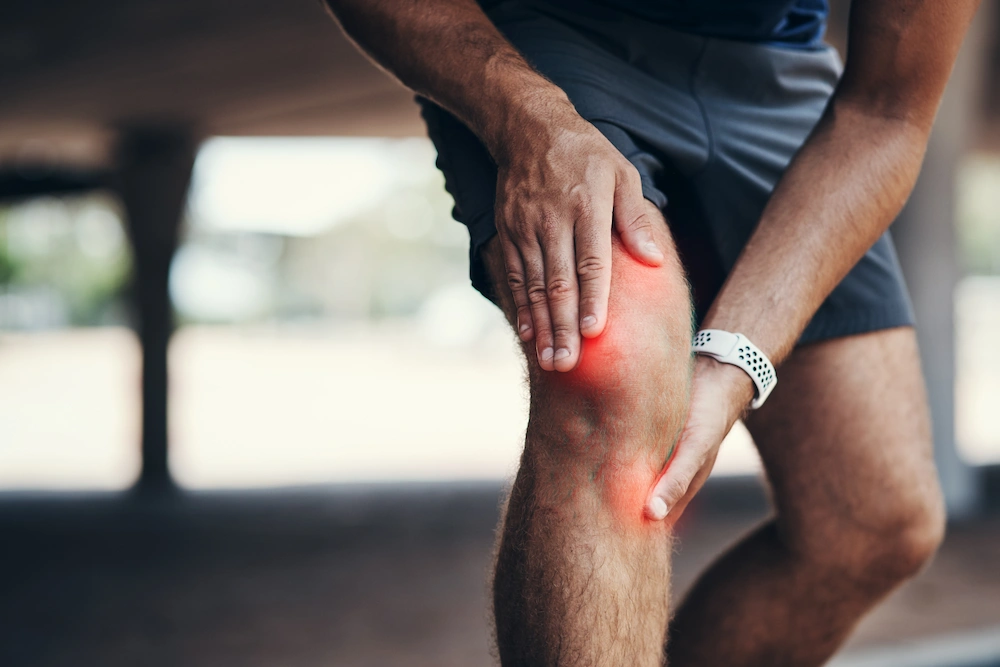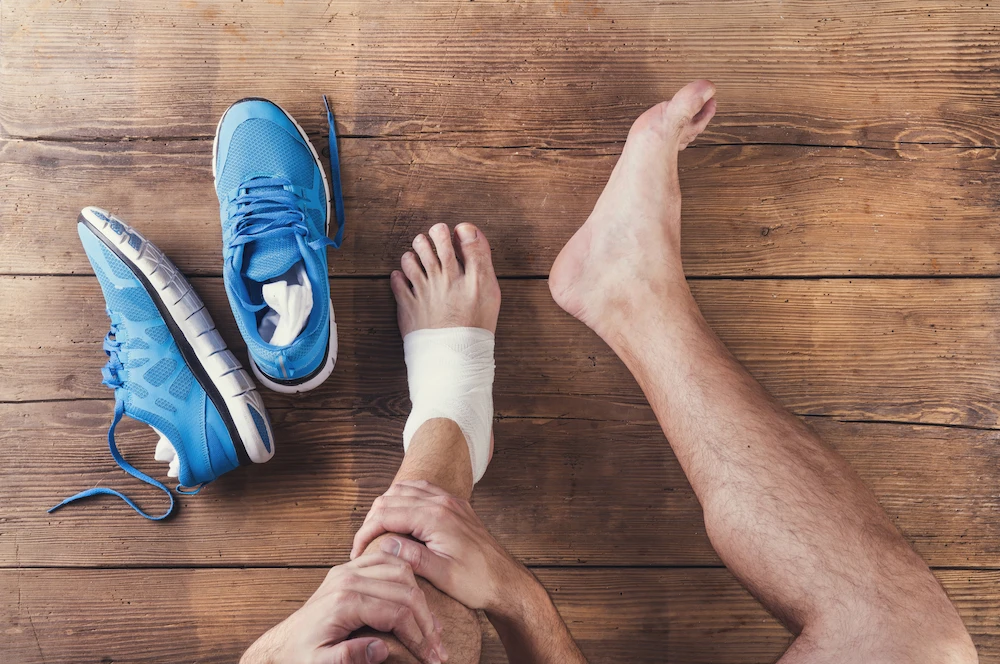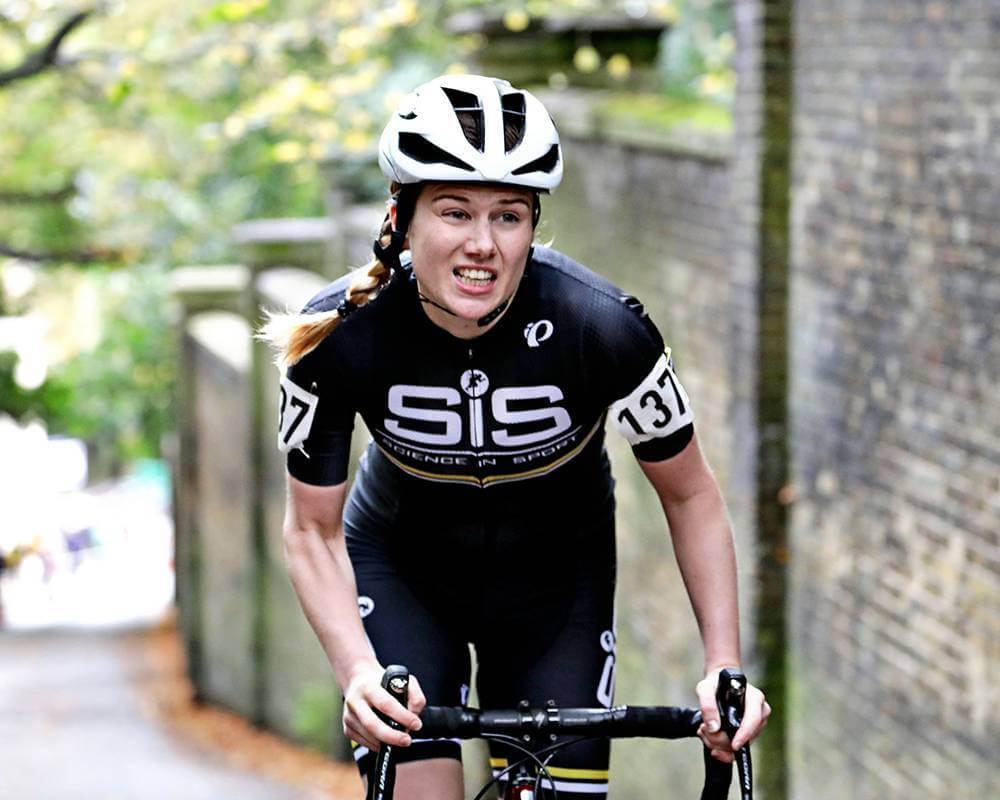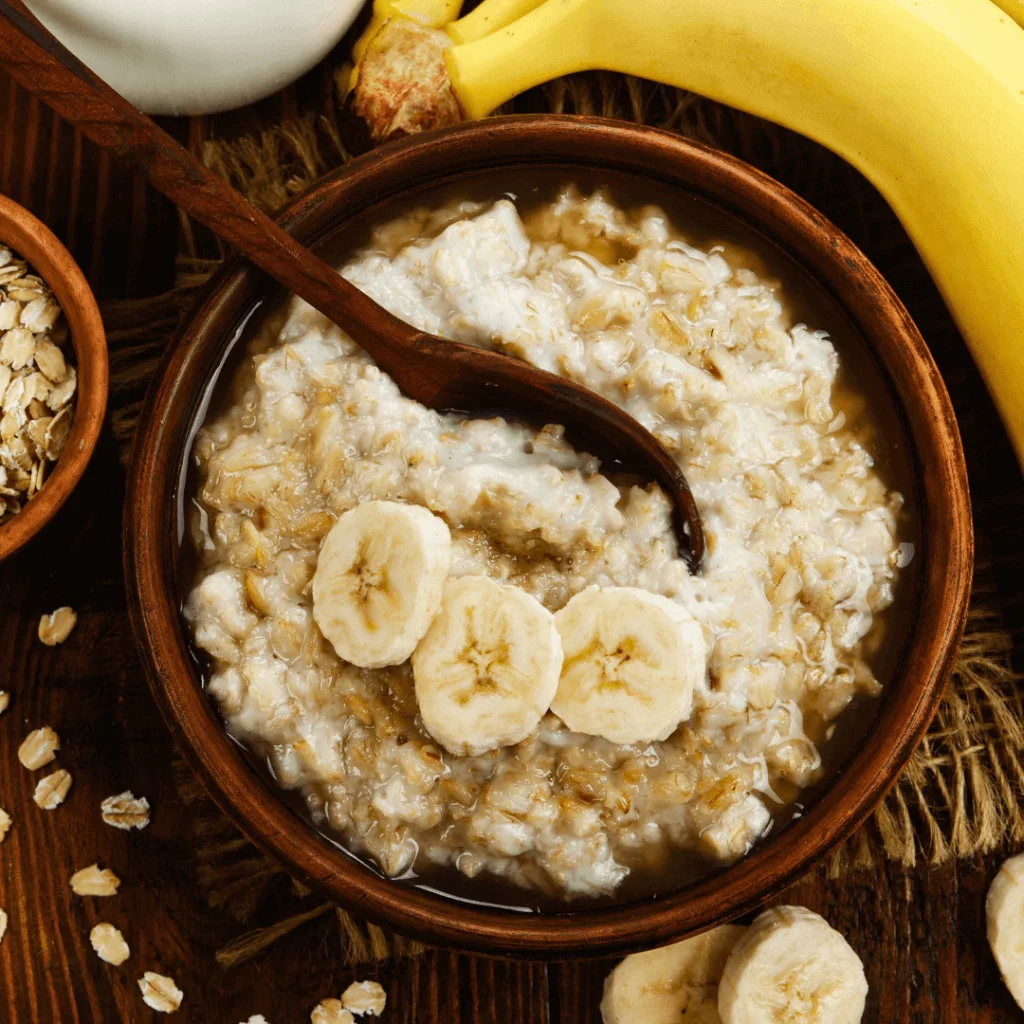
Running
What is Runner’s knee?
Runner’s knee, also known as patellofemoral pain syndrome (PFPS), is a common condition that affects runners and athletes who engage in repetitive knee movements. It is characterised by pain and discomfort around the kneecap (patella), which can vary in intensity from mild to severe
1 min read
Common Causes of Runner's Knee
There are several factors that can contribute to the development of runner's knee.
Common causes include:
-
Overuse: where the repetitive stress on the knee joint leads to irritation and inflammation. It can occur from running on hard surfaces or uneven terrain, or from suddenly increasing the frequency or intensity of your running.
-
Muscle imbalance: Weakness in certain muscle groups, such as the quadriceps or hip muscles, can affect the alignment of the patella, increasing the risk of developing runner's knee. Tightness in the muscles surrounding the knee joint can put excessive pressure on the patella, leading to pain and discomfort.
-
Biomechanical issues: Foot pronation (rolling inward) or leg length discrepancy, can also contribute to the development of runner's knee. These factors can alter the alignment of the lower limbs, putting additional stress on the knee joint.
-
Footwear: Wearing shoes that do not provide adequate support or cushioning can increase the impact on the knees during running, potentially leading to runner's knee. It is recommended to choose running shoes that are specifically designed for your foot type and running style to help prevent injuries.
-
Technique: Running technique also plays a role in the development of runner's knee. Poor running form, such as overstriding or landing heavily on the heels, can place unnecessary strain on the knees. Runners need to focus on maintaining proper posture and stride length to reduce the risk of knee injuries.
Risk Factors and Who is Most Affected
While runner's knee can affect anyone who engages in repetitive knee movements, there are certain risk factors that may increase your susceptibility to this condition.
Female runners, for instance, are more prone to developing runner's knee due to differences in lower limb alignment and muscle strength.
People with a history of knee injuries or previous episodes of runner's knee are also at an increased risk. Overweight individuals may experience an increased load and stress on the knee joint, making them more susceptible to developing runner's knee.
Additionally, individuals with flat feet or high arches are more likely to experience issues with knee alignment, leading to an increased risk of developing runner's knee.
Age can also impact the development of runner's knee. As we grow older, the cartilage in our knee joints may start to wear down, leading to increased friction and potential damage.
As well as physical factors, environmental conditions can also contribute to the likelihood of developing runner's knee. Running on hard surfaces, such as concrete pavements, can increase the impact on your knees and potentially lead to the development of runner's knee. Running on softer surfaces like grass or synthetic tracks can help reduce the strain on your knees and lower the risk of developing this painful condition.
Diagnosis: How is Runner's Knee Identified?
Diagnosing runner's knee typically involves a thorough evaluation of your medical history, a physical examination, and in some cases, imaging tests. During the physical examination, a healthcare professional will assess your knee's range of motion, stability, and any signs of swelling or tenderness.
Understanding the specific activities that exacerbate your knee pain can provide valuable clues for diagnosis and treatment.
Imaging tests, such as Ultrasound scans, X-rays or magnetic resonance imaging (MRI), may be ordered to rule out other potential causes of knee pain, such as fractures or ligament tears. These tests can also provide valuable insights into the alignment and structure of your knee joint.
Blood tests for runners can also help identify increased levels of inflammation, by checking markers such as hs-CRP (high-sensitivity C-reactive protein).
Treatment Options: From Rest to Surgery
The treatment of runner's knee often involves a combination of conservative measures aimed at reducing pain and inflammation, promoting healing, and addressing any underlying issues. In most cases, rest and activity modification can help the knee joint recover and heal.
Physical therapy exercises can help strengthen the muscles around the knee, improve flexibility, and correct biomechanical imbalances. You may also be recommended orthotics or shoe inserts to provide additional support and alignment to the foot.
In more severe cases, where conservative treatment methods fail to provide relief, injection therapies may be considered. Injections can be a useful treatment for runner's knee, also known as patellofemoral pain syndrome (PFPS), and can help reduce pain and restore the knee's function. There are different types of injections available and their suitability may differ depending on the underlying cause of the pain. These should be discussed with a Sports and Exercise Medicine specialist.
-
Corticosteroid injections
Also known as cortisone shots, these injections can reduce inflammation and pain in the knee joint, allowing runners to continue running without discomfort. They are a non-invasive treatment option, but repeated use can weaken surrounding tissues and bones. Ultrasound-guided corticosteroid injections are often recommended because they are quick and effective with a low risk of complications.
-
Platelet-rich plasma (PRP) injections
This treatment involves extracting platelets from the patient's blood, concentrating them, and injecting them into the knee joint. The goal is to stimulate tissue healing by reducing inflammation and encouraging new tissue growth.
-
Hyaluronic acid injections
Also known as viscosupplementation, these injections help lubricate the knee joint, which can improve its function and reduce pain.
If all these less invasive treatments fail then rarely your physician may consider referring you to an Orthopaedic surgeon. Surgical options for runner's knee may include arthroscopy, where a small camera is used to inspect and treat the knee joint, or realignment procedures to correct structural issues.
The success of treatment for runner's knee often depends on early diagnosis and intervention. Seeking prompt medical attention and following the recommended treatment plan can significantly improve outcomes and speed up recovery.
You may find relief from knee pain by incorporating low-impact activities such as swimming or cycling into your exercise routine. These activities can help maintain cardiovascular fitness while reducing stress on the knee joint, aiding in the overall rehabilitation process.
Preventative Measures for Runners
If you’re new to running, one important measure is to gradually increase the intensity and duration of your runs, allowing your body to adjust and adapt to the increased workload.
Wearing proper footwear with adequate cushioning and support can also help reduce the impact on your knees. It is advisable to replace worn-out shoes regularly to maintain their effectiveness in providing shock absorption.
Incorporating strength training exercises into your fitness routine, focusing on the muscles around the hip and knee, such as barbell squats and lunges, can help improve overall stability and reduce the risk of developing imbalances.
Another key aspect of preventing runner's knee is to pay attention to your running form. Running with proper technique can help distribute the impact of each stride more evenly throughout your body, reducing the strain on your knees. It is essential to maintain a good posture and engage your core muscles while running to support your lower body and prevent excessive stress on your knees.
In addition to strength training, including flexibility exercises in your routine can also be beneficial. Stretching the muscles in your legs, especially the quadriceps, hamstrings, and calves, can help improve your range of motion and reduce the risk of tightness or imbalances that may contribute to runner's knee.
When to Seek Professional Help
If you experience persistent or worsening knee pain, or if the pain starts to affect your daily activities or quality of life, it is advisable to seek professional help. A healthcare professional, such as a sports medicine specialist or physiotherapist, can accurately diagnose the underlying cause of your knee pain and recommend appropriate treatment options.
Consider seeking professional help if you notice any signs of inflammation, such as redness, swelling, or warmth around the knee joint. These symptoms could indicate a more serious issue, such as an infection or inflammatory condition, that requires prompt medical attention to prevent further complications.
Delaying help for knee pain can lead to prolonged discomfort and potentially worsen the underlying condition. By consulting early on, you can receive timely interventions and personalised treatment plans to address your specific needs and improve your overall knee health in the long term.
Long-Term Outlook: Can You Run Again?
The prognosis for runner's knee is generally favourable, with most people able to return to running and other activities after appropriate treatment and rehabilitation. However, the time frame for recovery can vary depending on the severity of the condition and individual factors.
Follow the advice and guidelines for rehabilitation, allowing sufficient time for healing and a gradual return to activity is on the cards.
Overall, runner's knee is a common condition that can be effectively managed with proper diagnosis, treatment, and rehabilitation. By understanding the causes, risk factors, and treatment options, individuals can take proactive steps to prevent, address, and recover from runner's knee, allowing them to continue enjoying their running activities with reduced pain and discomfort.
Blood test for
Runners
Male & Female Tests
sports doctor review
Results in 2 working days
Flexible subscription
Read Next...
Get expert advice to help you improve your results.
Go to our knowledge centerGet 10% off your first order
Want regular tips on how to make the most of your results? Join our newsletter and we'll give you 10% off your order!



